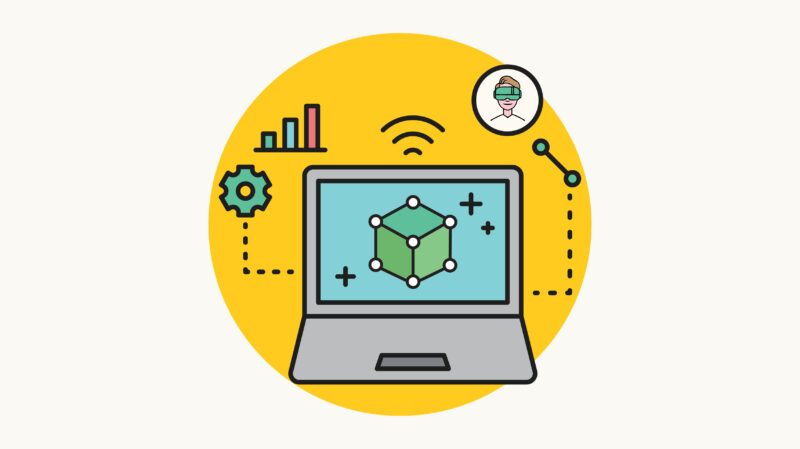
Immersive learning results
Simulation training transforms the e-learning game by turning passive knowledge into practical skills. Through immersive experiences and thoughtful design, simulations help learners apply what they know in their real context. This article explains how Kashida can leverage simulation-based training to provide impactful learning, and draws insights from notable projects such as Rowad Simulation, Ashval Courses, and Makeen. Our focus in this article is on how design drives outcomes and engagement.
Simulation Training: Turning Knowledge into Action
Despite extensive access to online learning, one problem persists. This is a struggle to apply the theory in real-world scenarios. Simulation training addresses this by placing learners within a realistic, decision-driven environment, allowing them to retry without practice, failure, and real-world risks.
Simulation is the imitation of real-world processes and decisions provided in a controlled environment. Whether game-based learning, story-driven journeys, AI assessments, or immersive VR simulation, this strategy creates hands-on learning. Trainees are challenging themselves to think positively, act intentionally and improve through feedback.
Research Insights
A study published by the National Training Laboratory shows that learners retain approximately 75% of their knowledge through practice-based learning, such as simulation, compared to just 5% in lecture-based methods.
Why teaching design is important
The simulation is as powerful as the design behind it. Thoughtful teaching design transforms scenarios into learning engines. These elements are essential.
Clear learning goals. Start by not only knowing better, but also having to do better. The flow of the story. A compelling storyline gives you a context and emotional connection. realism. The environment and decision-making must feel authentic and consistent with the learner’s world. Feedback loop. Real-time relevant feedback builds confidence and revises courses. Scalable interactions. Adjust complexity based on skill level to suit both beginners and experienced learners.
Design decisions are what make the difference between one-time activities and the effects of lasting learning.
Learn through virtual factory
Started in Saudi Arabia and supported by the Ministry of Education, Rowad is a financial literacy initiative aimed at entrepreneurs. With the goals aligned with Kingdom Vision 2030, Rowad needed a system that could provide large-scale, attractive and effective training.
Kashida has created a custom open EDX platform in both Arabic and English. Centerpieces are virtual factory simulations in which learners manage production, staffing and budgets to develop real-world financial skills.
The main design features realistic and culturally relevant scenario learning-driven decision-making story-driven modules that reflect performance tracking of financial challenges, reflecting the impact on continuous improvement in the first year.
Sedco Rowad simulations show how personalized choices, immersive storytelling, and responsive feedback can enhance real knowledge and behavioral changes.
Simulation for young learners
To reach younger audiences, the Ashval course adapted financial education to an interactive, animated experience. It teaches budgeting and savings through decision-based learning using relevant storylines and visual simulations designed for children.
Example scenario: Learners witness the outcome by captivating animated feedback and decide whether to spend or save money.
Key Design Choice Simplified Language and Visual Branching Scenarios have immediate feedback age-appropriate cultural relevance
Ashbal introduces how simulation-based learning can effectively develop life skills essential for children when they are in line with cognitive development and social contexts.
Interactive Multi-Cenario Workplace Training
Makeen offers a different simulation approach. This is immersive, scenario-based training within a dynamic and interactive building layout. Learners move across different areas, encounter role-specific challenges, and practice job-related decision-making.
Each scenario replicates the actual workplace dilemma, inter-functional coordination, customer handling, and compliance enforcement provided in a high-sight environment.
Key Design Strengths Multi-Cenario Branching Stories Context Navigation Job Roles Specificity and Realism through Virtual Environments
Makeen exemplifies how environmental context and adaptive difficulty increase relevance and workplace readiness.
Lessons learned and best practices
These case studies highlight best practices in simulation design.
Use stories to pinpoint learning. The story creates emotional investment and context. Focus on behavioral change. The simulation needs to drive the action you want to see. Scaling properly. Match complexity between your audience and streaming platform. Design for reflection. Built-in feedback and post-simulation discussion cement learning. Track and repeat. Use engagement and performance data to improve your training.
The Kashida project consistently applies these principles and explains their widespread adoption and recorded success.
Benefits: From knowledge to confidence
Improved simulation:
Retaining knowledge. According to the Journal of Educational Psychology, simulations increase retention by promoting experiential engagement and critical thinking. decision making. Learners who practice realistic decision-making are more prepared and confident under pressure. The confidence of learners. A safe environment allows for trial and error, and improves capabilities over time.
Throughout all three case studies, learners did not understand the concepts alone. They began to apply them. From children to professionals who budget pocket money and manage operational challenges, simulation training has proven to be transformative.
Simulation business case
Simulation training is not just a learner’s advantage. It’s a smart business move. The advantages are:
High knowledge retention rate (up to 90%) and faster acquisition of skills
Simulation creates repeatable, scalable environments for high-stakes practices and is ideal for sectors such as finance, healthcare, logistics, education.
Implementation Recommendations
Start with the question, not the platform. Identify gaps in actions or decisions you want to address. Involve stakeholders early. Ensure consistency with business needs and learner profiles. Firstly, design for engagement. Motivate your actions with stories, feedback, and choices. Please choose the right technique. Match complexity to budget AI, VR, or mobile-enabled scenarios. Measure the results. Build assessments to track behavioral change and ROI.
Simulation is not plug and play. It requires strategic investments, professional design, and continuous improvement, but the reward is worth it.
Conclusion
Simulation training is more than a buzzword. This is a proven solution to modern L&D challenges, combining realism, relevance and results. Kashida’s work with Rowad, Ashbal and Makeen prove that simulation designs can have meaningful and measurable impacts when tailored to local needs based on strong pedagogy.
Whether you’re designing for adults or children, moving from face to face to digital, or adding AI-driven personalization, simulation training is a bridge from knowing to doing. And when built correctly, the bridge leads to confident, capable learners and more powerful organizations.
Cassida
We are about learning. Let me explain it briefly. Design and create custom learning content, distribute it across multiple platforms, and always enrich your learning with technology.


